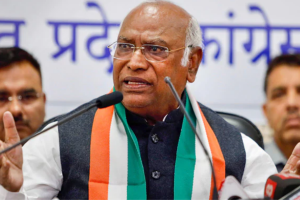I always boasted, silently and sanctimoniously over never having experienced the deadliest of the Seven Deadliest Sins – envy! But to my utter dismay, a Sudanese gent proud of his country’s fragrance heritage put my false pride to test, with the words “turaathina yadadhamman as-sandaliyyah min al Hind” (our heritage utilizes Indian sandalwood oil). Seated beside me at a plush Mumbai fragrance boutique, he vividly described how his country’s exotic incenses are soaked in Mysore sandalwood oil, a pillaring ingredient.
While phenolic, plastic-smelling synthetic imitations have flooded the Indian markets, pure and original Mysore sandalwood, historically deemed ‘India’s fragrant ambassador’ has become a complete rarity, the name remaining merely a name to many. As an insanely passionate fragrance aficionado, my envy of the Sudanese gent reveling in my forefathers’ fragrant legacy propelled me to make a beeline to Mumbai’s ultimate sandalwood destination to immerse myself in my ancestral scent!
Advertisement
Sandal simplicity
Simply named ‘Mysore Products’, the shop is a non-descript one in the heart of Mumbai’s bustling Princess Street commercial hub. It is run by Mr.Shankar Vishwanath Bangalore, a starkly simple, scholarly sandalwood expert, ‘Bangalore’, his native city’s name being a part of his own, as per south Indian tradition. “We previously had hoards of Sudanese purchasing our sandalwood oil. Now, due to the ongoing conflict in the region, the numbers have dwindled”, he confirmed.
Rightfully entitled, I buried my face in a tray of sandalwood shavings for an ethereal out-of-body experience as the woody, smoky, creamy aromas of the ancient Vedic scent created an olfactory trance!
Under the patronage of the Mysore Royalty, the distillation of sandalwood oil was pioneered in 1916. Today, the legendary Karnataka Soaps & Detergents Ltd (KSDL) , a Karnataka government undertaking pillars the legacy. As an authorized dealer its products, Mr.Shankar unveiled a treasure house of the finest sandalwood gems at the 97 years-old shop, established in 1928. “My grand uncle Mr. B. Rudra was the first distributor of sandalwood oil and sold its very first batch back in Bangalore in 1916. During the First World War, sandalwood exports had completely stopped. The then Mysore Dewan Sir. M. Visveswaraya under orders from the Maharaja wanted him to sell sandalwood in Bombay”, he shared.
The high demand for sandalwood from the Parsi Zoroastrian community and Hindus alike, he says, made Bombay a thriving market. Both communities offer the wood to the sacred fire.
The old world warmth of the shop draws you as a sandalwood scent bubble gently cajoles you for a soul-satiating experience. From the myriad of products displayed in old wooden cupboards, emerges olfactory enchantment.
Incense excellence
From the countless, exorbitantly priced, fancily packaged incenses with the ‘sandalwood’ tag emerges the quaint, humble Mysore Sandal Dhoop sold at just Rs.30 a box. The aromas would inspire instant devotion as the tiny cone is lit, with its powerful woody, spicy, earthy aromas permeating the space. “ KSDL believes in utilizing every part of a harvested tree, not wasting even a bit. These dhoops and agarbattis are made of sandalwood residue derived post distillation, which would contain a small percentage of the oil. That’s the secret behind the authentic sandalwood note” Mr.Shankar explains.
The iconic Mysore Sandal agarbatti with the cream, green and red box resurrected evening pooja memories at my Kannadiga great grandmother’s bungalow with its woody, leathery and subtly floral energetic aromas. Sir MV 100, a more exotic agarbatti charmed my senses with deeply and instantly comforting woodiness with amber, leathery, musk and an accord of oudh-India’s other regal fragrant gift to the world.
For a floral finish, Rose (intoxicating damask roses with woody overtures) and Karnataka’s famous Mallige ( jasmine) incense sticks celebrate the innate devotion embedded in the Indian consciousness.
From Mysore Product’s repertoire, the most uniquely crafted high-end incense was the Mysore Sandal Sambrani dhoop cone. “Sambrani is the south Indian word for benzoin. It’s called loban in the north. The outer light brown cup is made of the sap of the sandalwood tree. High grade benzoin resin chunks are placed within each cup”, he illustrates.
An incredible blend of two of the most sought after incense ingredients, the robust woodiness of sandalwood mingling with the deep, sweet, resinous accords of benzoin seemed to instantly silence the mind into meditation. An agnihotra havan-like atmosphere fills the air.
Luxury heritage style
Any Indian who was raised with even a tad of tradition in their family would have bathed with India’s cherished Mysore Sandal soap! For me, it froths with schoolboy memories. Even after a long and sweaty day at the playground, its peculiar musky and mildly smoky aromas would persist. Its ‘Gold’ version duly preserves the nostalgia.
Mr.Shankar believes that India is the only country in the world to incorporate pure sandalwood oil as an ingredient in its soaps. After having studied oil technology in the United Kingdom, veteran scientist Mr. S.G.Sastry pioneered the first-ever sandalwood oil based soap in 1918.
The jewel in the Mysore crown is however, their world famous Millennium Soap packed in a classy golden box with a plastic case that conceals the soap. Indeed, India’s answer to the western world’s upper crust luxury soaps, the therapeutic alchemy of pure sandalwood oil and complimenting essential oils of vetiver, geranium, patchouli, cedarwood and guaiacwood spells gilt-edged excellence. Truly luxury with a spiritual touch.
In a country of compulsive talc users, a smearing of the old school Mysore Sandal talcum powder seemed to sillage like a perfume, cutting through the tropical grime.
Perfumed privilege
“It is sad that we no longer sell sandalwood oil in our store. Where are the tress?” Mr.Shankar laments. However, to ease my disappointment, he present an attar oil that bore the accords of the world’s finest sandalwood oil with a creamy saffron in the opening.
Bottling the essence of India’s ancient Ashtagandha ( documentation of eight spiritual scents), the oil dabbed on my skin by the expert also projected exquisite musk and dried down with the regal profile of Mysore sandalwood oil.
What is the future of Indian sandalwood? “Wish we could have more trees!” he said, humbly. “Even if one does decide to grow sandalwood, security is a huge concern. In Karnataka, people opt for coffee instead of Sandalwood”, he added. However, a sudden flurry of customers and the words ‘chandan’ filling the air lightened up his visage yet again!











